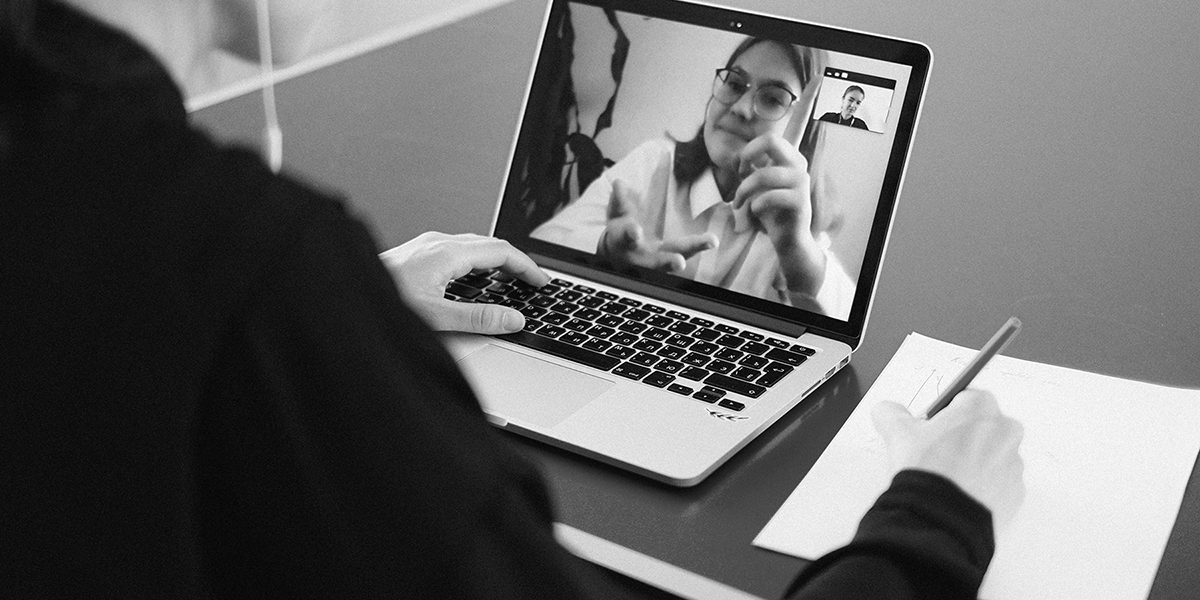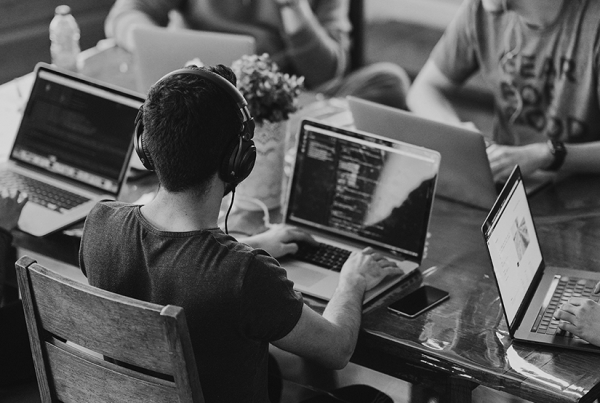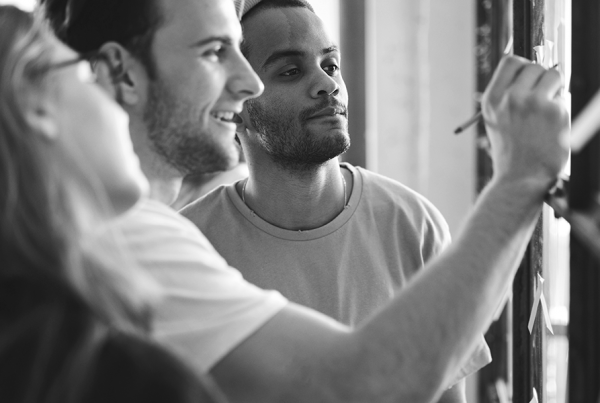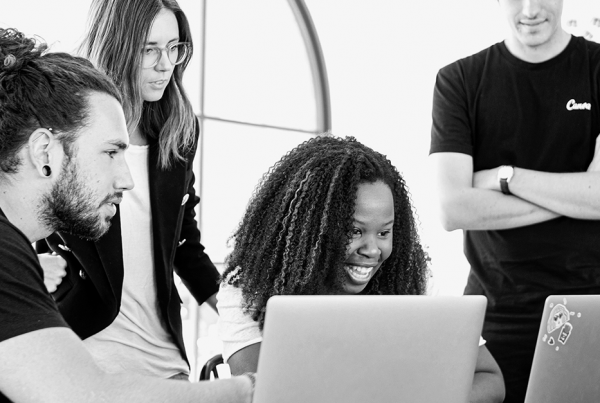Remote work or lockdown work?
For the Software Development Summit, an online event from the software industry organised by Voxel colleagues, a round table was held about the pandemic consequences on our way of working and how to live with them.
For that reason, we had 3 great professionals who already worked remotely before the pandemic. Katia Aresti, from Paris, software engineer with more than 15 years of experience and working in Red Hat since 2017. Alba Roza, from Amsterdam, dedicated to technical communities and product development support in the Foundation for Public Code, specialised in developer relations since 2011. And Álvaro Salazar, from Burgos, a technical leader with more than 20 years of experience and nowadays working as VP of Engineering in Lookiero. The session was facilitated by Aroa Gúdel, a psychologist who specialised in organizations, IT People Partner in Voxel and certified in Agility in HR by Agile People.
It was guided by 3 main questions/specific phases between the speakers.
Remote work is like the one we are living during the pandemic?
This was the first question of the discussion and it’s one of the most popular topics everyone is speaking about during the current situation.
The 3 speakers didn’t have any doubt about saying a forthright no, the current way of doing remote work is completely different from the one they lived before the health crisis.

The first difference they highlighted was displacement. Two of the professionals pointed out that in a normal remote work, even though you could be far from your colleagues, you could always go to coworking spaces where you could share with other people from the same sector. Moreover, they spoke about the possibility to travel away to other company offices before the pandemic or just travel for pleasure and work from anywhere without the pressure of going to the same office every day.
The second difference, and directly related to families, was the difficulty to be focused on your tasks because of having everybody at home. In normal remote work, you could have your workplace without having distractions, nowadays with for instance children at home is way more difficult, even though you still have your own workplace.
The last difference, and the one with more impact to me, was the abrupt change in the way of working because of the lockdown. In a common remote work, you always had the time to adapt and learn, besides, the organisation was ready for this way of working. During this health crisis, the situation suddenly changed and a lot of organisations didn’t have enough time to be ready and they still have problems offering the best conditions for their employees.
Which practices do you know to succeed in a remote world?
After speaking about those differences, they started to speak about some practices that can help to work remotely in a better way, even during this pandemic.
In this sense, really interesting ideas popped up. The most common of any organisation working in a remote way is asynchronous communication. Professional chats (like Slack or Hangouts) have facilitated the way any worker can work and collaborate with others. However, according to the speakers, this way of communication must be complemented with other measures. One of them was having common goals and agreements across the team and the organization. Besides, having synchronous sessions at least once a week was another measure to have in mind to align between teams and departments, another reason to have those sessions was to just know how your colleagues are!
This point appeared several times during the discussion, the emotional well-being in a remote working way is always important and even more when you are living in a pandemic. If you are working in the same office, it is easier to know how your coworker is and what she feels, in a virtual environment is almost impossible, so any session, additional information about you (one speaker called this personal manual) or even emojis can be crucial to visualize your emotional status.
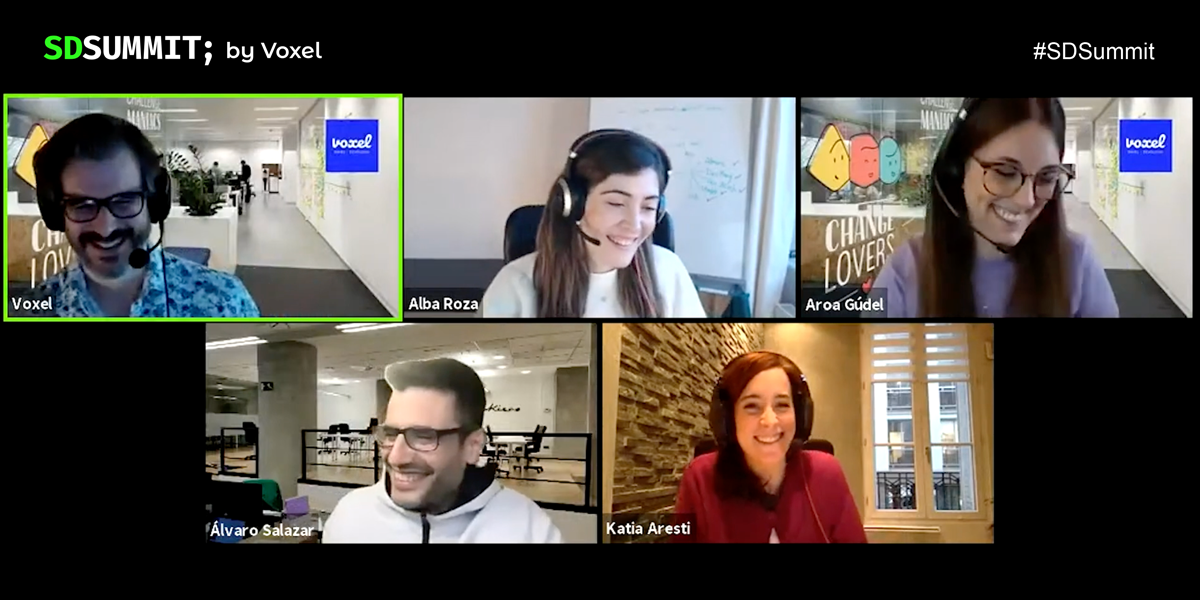 To complement this visualization of your emotional status, the agreements and the asynchronous communication, having clear documentation was the other key to succeed in a remote working environment. It’s vital to document any information that in a normal office would be property of someone whom you can ask. Without that documentation, asynchronous communication would be impossible and, as a consequence, the remote work would be inefficient and slow.
To complement this visualization of your emotional status, the agreements and the asynchronous communication, having clear documentation was the other key to succeed in a remote working environment. It’s vital to document any information that in a normal office would be property of someone whom you can ask. Without that documentation, asynchronous communication would be impossible and, as a consequence, the remote work would be inefficient and slow.
Some curiosities were mentioned too like virtual silent rooms where you can simulate working in an office, calendar personal events for your thinking time or chats/channels where you can thank, celebrate and socialize. It’s always important, even virtually! 🙂
How have you kept engagement with your colleagues or with your company? How have you kept motivated?
Finally, engagement was the third pillar of the conversation. In a pandemic environment, it’s even more difficult to keep it.
The 3 speakers highlighted the necessity of having in mind workers well-being over any other point.
On one hand, they spoke about organization measures like mental health policies, flexible hours, resting days or learning days. They also mentioned classes related to well-being and emotionality like meditation or yoga.
On the other hand, they pointed out 1:1s and how important they are to know more about your colleagues’ emotional status. From a more personal perspective, they discussed the importance of exteriorizing your emotions, mainly when you are feeling bad. Showing others you are vulnerable can help them to do the same and be more transparent to properly be understood.
Definitely, COVID is being a serious test for the whole world, mainly from a personal and emotional perspective. For that reason, with or without pandemic, organisations must consider people in their centre. 🙂
You can watch the session again here.
About the author:


